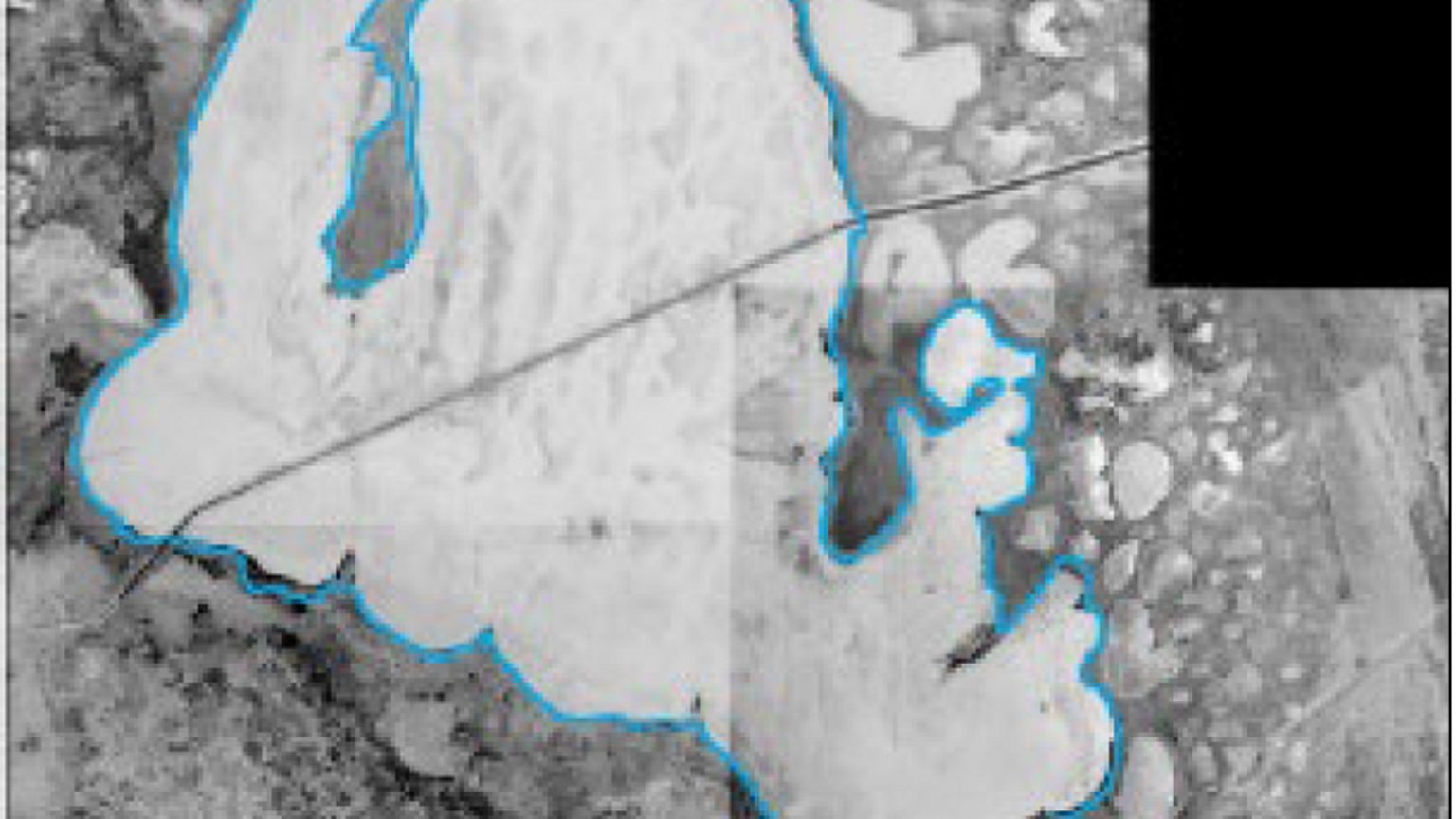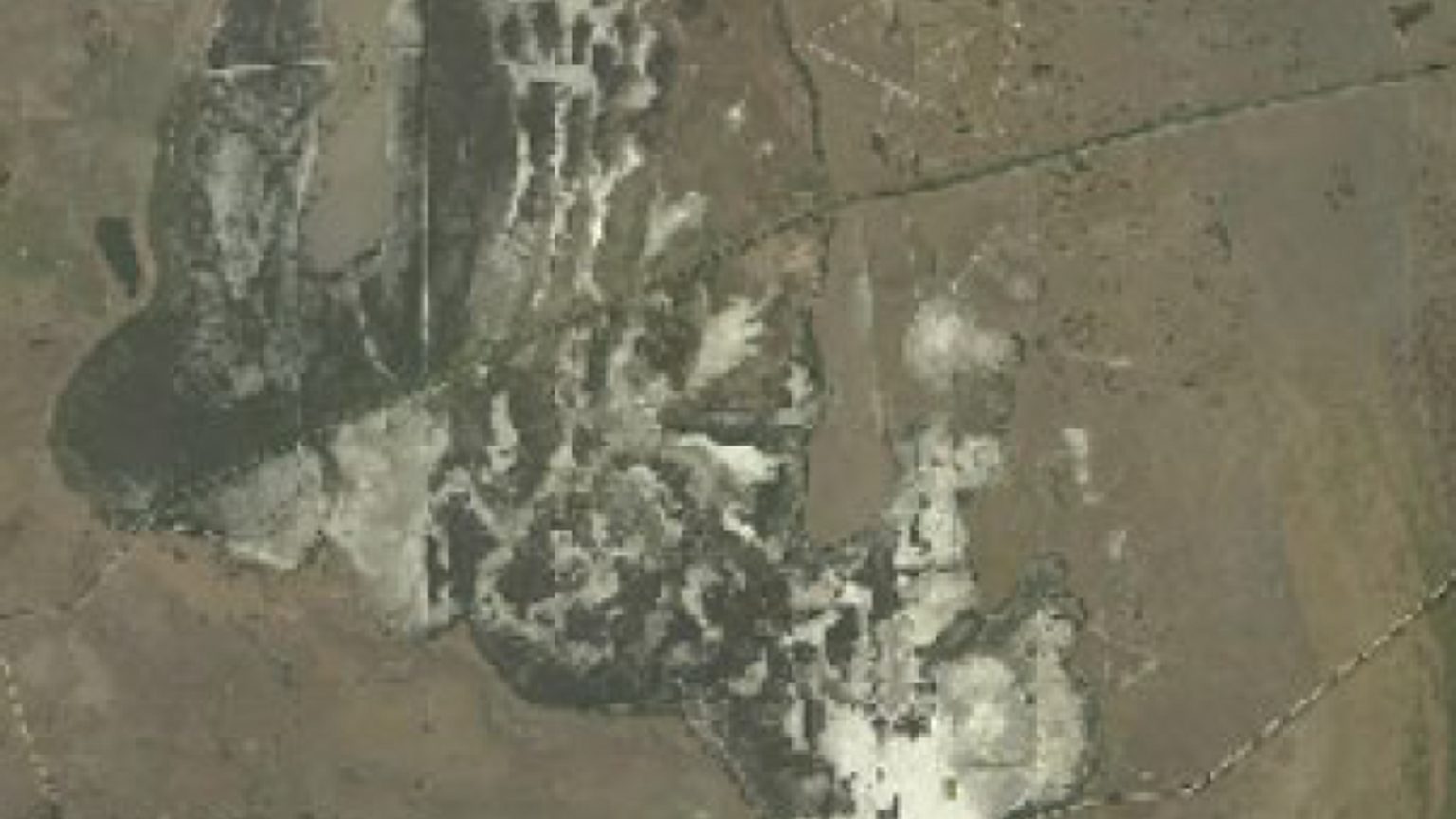Restoring wetland habitat at Lake Hawdon North
Construction works at Drain L are currently in progress.
Please note there is strictly no public access permitted to the Drain L drainage reserve or construction site on western edge of Lake Hawdon North.

As part of the Healthy Coorong, Healthy Basin On Ground Works project, the Department for Environment and Water is restoring wetland habitat at Lake Hawdon North.
The Lake Hawdon North project will improve the availability and quality of habitat for migratory and non-migratory shorebirds at priority wetlands in South Australia’s Lower Lakes and South East.
Construction of new infrastructure to improve water management will take place from October 2024 for approximately 7 months, weather dependent.
About Lake Hawdon North
Lake Hawdon North is a seasonally inundated wetland, located approximately 15 km east of Robe in South Australia’s South East. It is located on Country that is the southern limit of the Meintangk and northern limit of the Boandik Nations.
Covering 2,475 ha, Lake Hawdon North forms one of the largest wetland systems in the Limestone Coast region, along with the adjoining Lake Hawdon South (3,298 ha). It is one of several lakes within the South East that provides critical habitat for waterbird species, including migratory shorebirds, which have experienced significant declines in the Coorong region.
Cultural value
The restoration of Lake Hawdon North aligns with local First Nations’ community aspirations to reconnect and care for regional wetlands and the species they support.
The project team is working with the South East Aboriginal Focus Group throughout each stage of the Lake Hawdon North project to ensure cultural knowledge, values and interests inform and shape project outcomes.
Why is this project important?
Regional wetlands of the Coorong and the South East provide vital habitat for shorebirds, including migratory bird species that travel from as far as Siberia to feed on inundated salt marsh and mud flat areas in summer. These wetlands provide the birds with critical food resources, including invertebrates such as snails, crustaceans, worms and insect larvae, which the birds rely on to fuel-up before making the journey back to the Northern Hemisphere to breed.
Declines in the diversity and abundance of waterbirds (including threatened and migratory species) in the Coorong have been linked to declines in the quality and availability of waterbird foraging habitat. Some of our most common and abundant migratory shorebirds are now considered to be threatened at a national level.
The works being undertaken at Lake Hawdon North are essential to ensure the overall health of the wetland, and ensure the cultural, ecological, and social value of the site is improved and preserved into the future.

On-ground works to support regional bird refugia
Lake Hawdon North is intersected by an artificial drainage line called Drain L, constructed in the 1910s and later expanded in the 1950s, to improve agricultural productivity in the region by removing surface water.
Since the construction of Drain L the hydrology of Lake Hawdon North has been severely compromised, causing the wetland to dry too early in summer. This has led to a reduction of habitat and food resources for shorebirds at the end of their migration season, and a modified wetland habitat overcome by perennial and terrestrial plant communities.
A new regulator will be installed on Drain L at the outlet of Lake Hawdon North, on the western side of the wetland. This will allow water levels in Lake Hawdon North to be managed in a way that recreates a more natural (pre-Drain L) hydrological regime and maintain a shallow inundation of the lake bed through late summer and autumn, while still allowing peak winter flows to drain away.
Once works at the site are complete, it is anticipated that 1,763 ha of suitable habitat will be available for shorebirds during critical times, as well as providing substantial benefits to other plants and animals.
This will support the conservation of key Coorong shorebird species by restoring the habitats they depend upon and ensuring they exist within the broader regional landscape.
On-ground works at the site include:
- installation of a new regulator
- minor civil earthworks, access tracks and fencing around the new structure
- habitat modification to restore an open mudflat environment*
- adjoining rock-ramp fishway installation.
* In accordance with regulatory approvals
Please note: The Lake Hawdon North on-ground works project does not form part of the South East Coastal Lakes Project, which is a separate project being delivered by the National Parks and Wildlife Service SA. To learn more, visit the South East Coastal Lakes Project page.
Habitat modification
Prior to the construction of Drain L in 1915, and its enlargement in 1957-58, large shrubs of Melaleuca halmaturorum (South Australian swamp paperbark) were found predominantly on the fringes of the wetland. Whilst this native species is known for providing an excellent habitat for a range of plants and animals, the drying and freshening effect that Drain L has had on Lake Hawdon North has allowed this species to encroach on large areas of the wetland, forming dense stands that shade-out other plant species. Dense shrublands like these are unsuitable habitat for most wetland plants and birds, including migratory and resident shorebirds.
The project team is investigating methods for recreating open mudflat habitat and controlling the Melaleuca halmaturorum, including water management (via the regulator), controlled burning, continued sheep grazing, and mechanical removal before converting to mulch.
All vegetation management is subject to vegetation assessments and legislative approvals.
Project updates
Construction works are commencing in October 2024. Access to Lake Hawdon North and Drain L at this location will be restricted during construction.
For further information please subscribe to receive project updates or contact healthy.coorong@sa.gov.au.
Further information
Further information and technical reports are available on the On Ground Works Publications page.











